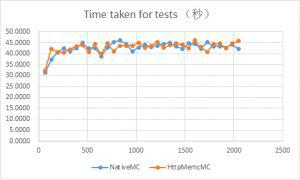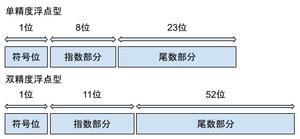Java Math类静态double ceil(double d)与示例
数学班双胞胎(double d)
此方法在java.lang包中可用。
此方法用于返回大于或等于给定参数的double类型值的最小值或最小值。
这是一个静态方法,因此也可以使用类名进行访问。
此方法的返回类型为double,这意味着它返回给定参数的最小值[double type]。
在此方法中,我们仅传递一个参数作为参数。
此方法不会引发任何异常。
语法:
public static double ceil(double d){ }
参数:
double d –将找到其最小值或最小值的双精度值。
注意:
如果我们传递“ NaN”,则返回“ NaN”。
如果传递零,则返回相同值。
如果传递无穷大(正数或负数),它将返回具有相同符号的无穷大。
如果我们传递的值小于0但大于-1.0的参数,则返回-0.0。
如果我们传递一个参数,该参数的小数点后的值大于0,则返回的值将增加1。
返回值:
此方法的返回类型为double,它返回double类型值的最小或最小值,该值大于或等于给定参数。
Java程序演示ceil(double d)方法的示例
//Java程序演示的例子//数学类的ceil(double d)方法
class CeilMethod {
public static void main(String[] args) {
//在这里,我们声明了几个变量
double d1 = -0.0;
double d2 = 0.0;
double d3 = -7.0 / 0.0;
double d4 = 7.0 / 0.0;
double d5 = -0.6;
double d6 = 1000.0;
double d7 = 1000.4;
//显示d1,d2,d3,d4,d5,d6和d7的先前值
System.out.println("Old value of d1 before implementation is: " + d1);
System.out.println("Old value of d2 before implementation is :" + d2);
System.out.println("Old value of d3 before implementation is :" + d3);
System.out.println("Old value of d4 before implementation is :" + d4);
System.out.println("Old value of d5 before implementation is :" + d5);
System.out.println("Old value of d6 before implementation is :" + d6);
System.out.println("Old value of d7 before implementation is :" + d7);
//在这里,我们将得到(-0.0),因为我们正在传递参数
//(-0.6),因为传递的值小于0但大于-1.0-
System.out.println("New value of d1 after implementation is :" + Math.ceil(d1));
//在这里,我们将得到(0.0),因为我们正在传递参数(0.0)
System.out.println("New value of d2 after implementation is :" + Math.ceil(d2));
//在这里,我们将得到(-Infinity),因为我们正在传递
//参数(-7.0 / 0.0)
System.out.println("New value of d3 after implementation is :" + Math.ceil(d3));
//在这里,我们将得到(Infinity),因为我们正在传递
//参数(7.0 / 0.0)
System.out.println("New value of d4 after implementation is :" + Math.ceil(d4));
//在这里,我们得到(-0.0),因为我们通过
//参数(-0.6),因为传递的值小于
//0但大于-1.0-
System.out.println("New value of d5 after implementation is :" + Math.ceil(d5));
//在这里,我们得到(1000.0),因为我们正在传递
//参数(1000.0),因为在小数点后传递值
//不大于0,所以返回相同的数字
System.out.println("New value of d6 after implementation is :" + Math.ceil(d6));
//在这里,我们得到(1001.0),因为我们正在传递
//参数(1000.4),因为在十进制后传递值
//点大于0,所以返回数字加1-
System.out.println("New value of d7 after implementation is :" + Math.ceil(d7));
}
}
输出结果
E:\Programs>javac CeilMethod.javaE:\Programs>java CeilMethod
Old value of d1 before implementation is :-0.0
Old value of d2 before implementation is :0.0
Old value of d3 before implementation is :-Infinity
Old value of d4 before implementation is :Infinity
Old value of d5 before implementation is :-0.6
Old value of d6 before implementation is :1000.0
Old value of d7 before implementation is :1000.4
New value of d1 after implementation is :-0.0
New value of d2 after implementation is :0.0
New value of d3 after implementation is :-Infinity
New value of d4 after implementation is :Infinity
New value of d5 after implementation is :-0.0
New value of d6 after implementation is :1000.0
New value of d7 after implementation is :1001.0
以上是 Java Math类静态double ceil(double d)与示例 的全部内容, 来源链接: utcz.com/z/326421.html









